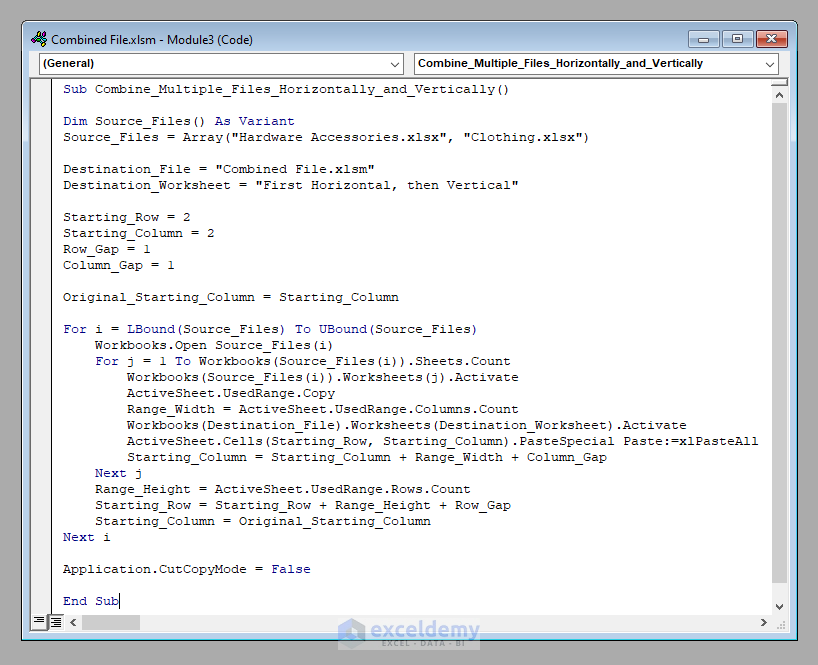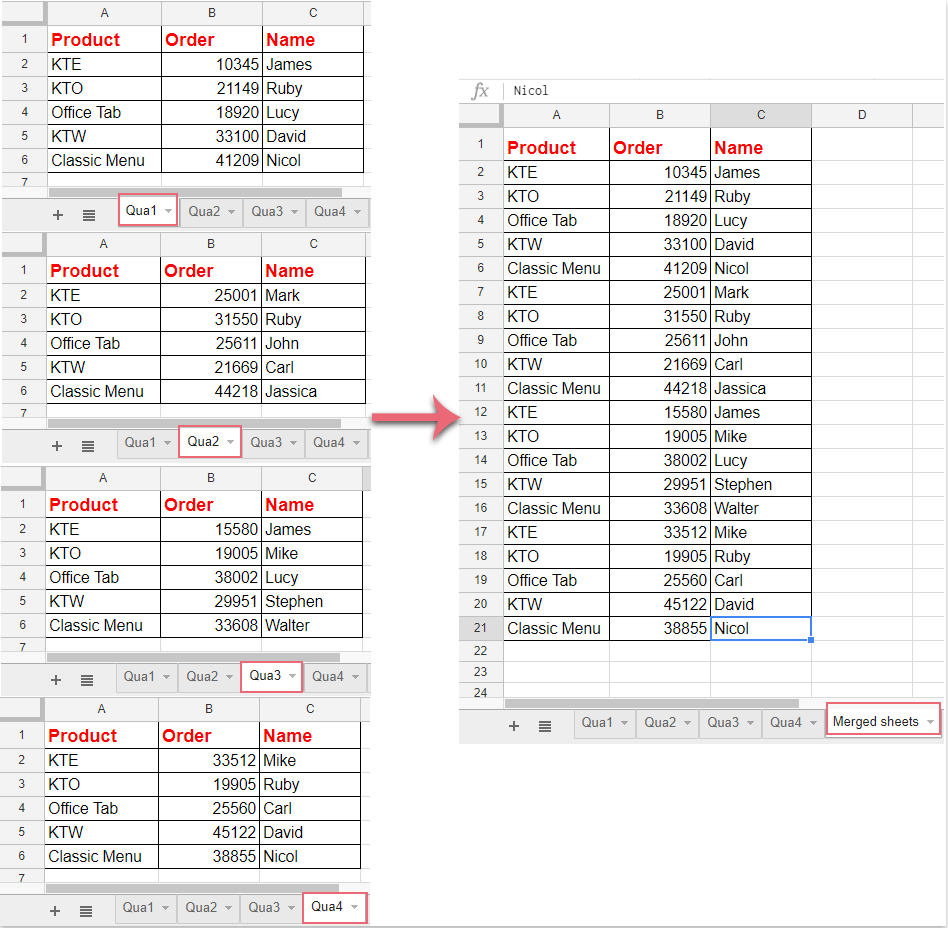Combine Excel Sheets: Ultimate Guide to One Master Sheet

Managing multiple Excel sheets can be daunting, whether you're a seasoned data analyst or someone managing a small business's inventory. Combining these sheets into one master sheet can streamline your workflows, enhance data analysis, and make information management far more efficient. In this comprehensive guide, we'll explore various methods to combine Excel sheets effectively, ensuring you can work with your data with ease and precision.
Why Combine Excel Sheets?

Before diving into the how, let's understand the why:
- Centralized Data: Having all your data in one place makes it easier to analyze, update, and track changes.
- Consistency: Ensure uniformity in data formats and formulas across different sheets.
- Efficiency: Reduces time spent switching between different sheets or files.
- Integrity: Minimize errors that can arise from manual data transfer.
Basic Methods for Combining Excel Sheets

Let's start with some basic techniques before moving on to more advanced strategies:
Using Copy and Paste

This is the most straightforward approach but works best for small datasets:
- Open the Excel workbook containing all the sheets you want to combine.
- Create a new sheet for your master data.
- Select and copy data from one sheet.
- Paste into the master sheet, ensuring you paste values and formats if needed.
Excel's Consolidate Feature

For similar structured sheets:
- Go to the master sheet where you want to consolidate data.
- Select Data > Consolidate.
- Choose the function (e.g., Sum, Average).
- Add references to your source sheets using the dialog box. Use the Browse button if necessary.
- Check Top row or Left column if your sheets have headers.
- Click OK.
⚠️ Note: Ensure all source sheets have the same structure for accurate consolidation.
Excel Formulas

Use formulas like:
- VLOOKUP: for looking up data in different sheets.
- CONCAT: to combine text from multiple sheets.
- INDIRECT: for referencing sheet names dynamically.
| Formula | Function |
|---|---|
| =VLOOKUP(lookup_value, table_array, col_index_num, [range_lookup]) | Lookup values in one sheet based on data in another sheet |
| =CONCAT(Sheet1!A1, Sheet2!A1, "-") | Combine data from different sheets into a single cell |
| =INDIRECT("'" & A1 & "'!B2") | Dynamic reference to data in a sheet name stored in A1 |

Advanced Methods for Combining Sheets

Power Query

Excel’s Power Query (or Get & Transform Data) is perfect for handling more complex data merging:
- From the Data tab, select Get Data > From File > From Workbook.
- Navigate to your workbook, select it, and load all sheets.
- Transform each sheet’s data as needed.
- Use the Append Queries option to combine multiple sheets.
- Merge the queries if necessary to create your final dataset.
🔑 Note: Power Query can handle varying sheet structures by using custom columns and conditional logic.
Using VBA for Custom Solutions

VBA (Visual Basic for Applications) offers automation for repetitive tasks:
- Create a macro to automate the process of merging data from multiple sheets.
- Use loops to iterate through sheets and gather data into a master sheet.
Sub MergeSheets()
Dim ws As Worksheet, LastRow As Long
For Each ws In Worksheets
If ws.Name <> “Master” Then
LastRow = ws.Cells(ws.Rows.Count, “A”).End(xlUp).Row
ws.Range(“A1:M” & LastRow).Copy Destination:=Sheets(“Master”).Range(“A” & Sheets(“Master”).Cells(Sheets(“Master”).Rows.Count, “A”).End(xlUp).Row + 1)
End If
Next ws
End Sub
Third-Party Add-Ins

Some external tools like Ablebits or Kutools can simplify combining sheets:
- Ablebits Ultimate Suite: Offers a feature to merge multiple sheets into one.
- Kutools: Provides dynamic merging options tailored for large datasets.
Final Thoughts

Combining Excel sheets into one master sheet is not just about reducing clutter but also about enhancing the analysis capabilities, consistency, and integrity of your data. Whether you’re using basic copy-paste techniques, leveraging Excel’s built-in tools like Power Query, or creating custom VBA solutions, the method you choose will depend on your dataset size, complexity, and your comfort level with Excel.
Remember, each approach has its advantages and considerations:
- Basic Methods are quick and require minimal setup but can be tedious for larger datasets.
- Power Query and VBA offer robust solutions for scalability and automation but might require a learning curve.
- Third-party Tools provide user-friendly options at the cost of potential subscription fees or learning a new interface.
What if my sheets have different column headers?

+
Power Query can rename and reorganize columns to match a predefined structure. You can also use VBA to script such transformations.
Can I combine sheets from different workbooks?

+
Absolutely, tools like Power Query can handle data from various workbooks, or you can use VBA to open and manipulate data from other files.
How often should I update my master sheet?

+
This depends on the data’s nature. For real-time applications, consider using dynamic tools or scripts that automatically update your master sheet.



